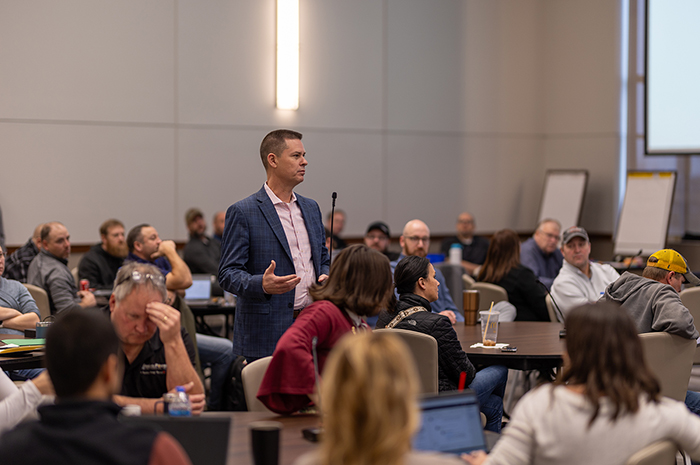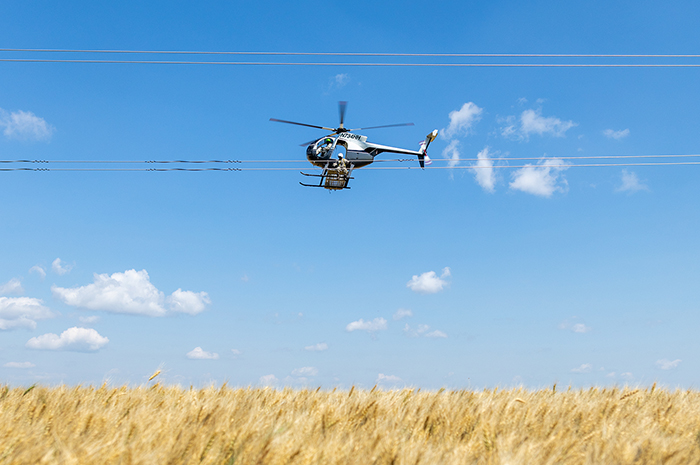Project Tundra progress continues amid pandemic
The carbon capture initiative is finding the support and partners needed for ultimate success.
In an open field outside of Center, N.D., a sky-blue drilling rig stands as a beacon of optimism for the future of Project Tundra.
Minnkota is leading Project Tundra, which aims to build the world’s largest CO₂ capture facility at the Milton R. Young Station. The project would remove more than 90% of the CO₂ from the plant’s Unit 2 generator and safely and permanently store it more than a mile underground.
Instead of searching for oil, the rig is drilling a 10,000-foot-deep test well to give Minnkota a clear picture of the CO₂ storage zones. The project began in mid-May and will continue through the end of June. From the well, researchers will retrieve rock cores and geologic data to ensure the safety and environmental stewardship of the CO₂ storage facility. No CO₂ will be injected during the test well process.
The Energy and Environmental Research Center (EERC) at the University of North Dakota is focused on Project Tundra’s CO₂ storage facility with support from a $17 million Department of Energy (DOE) Phase III CarbonSAFE grant received in April.
“We’ve been really fortunate to be part of Minnkota’s team and help them work on Project Tundra for a number of years,” said EERC CEO Charlie Gorecki. “We’ve been awarded the Phase III effort, which looks at storage options for Minnkota, should they choose to go forward with capturing CO₂ from the Milton R. Young power plant near Center, N.D. If that happens, we would continue to have reliable power from North Dakota lignite coal that has very low carbon emissions.”
The test well work will build on two decades of research the EERC has conducted on CO₂ storage in North Dakota, including a 3D seismic survey near the Young Station during fall 2019. Research has continually shown the state’s geology is ideal for CO₂ storage.
“Taking the next step in this research shows that North Dakota is well-positioned to bring a carbon capture and storage facility, like Project Tundra, into commercial operation,” said Mac McLennan, Minnkota president & CEO. “We are pleased to continue work with the energy experts at EERC because of their in-depth understanding of our industry and North Dakota’s unique geology.”
Minnkota has also begun a partnership with Fluor Corporation to conduct the Front-End Engineering and Design (FEED) study work on the CO₂ capture facility. Funded through federal grants, the study will provide an advanced engineering plan for building the capture technologies at the Young Station, as well as detailed economics related to construction and operation.
If a decision is made to move forward with Project Tundra, construction could begin near the end of 2022. It would represent an important step forward for carbon capture technology.
“The innovative technologies being evaluated have the potential to serve as a blueprint for the rest of the world to significantly reduce CO₂ emissions without sacrificing grid reliability and affordability,” McLennan said.
Main image: Drilling began in mid-May on a test well near the Milton R. Young Station to determine the suitability of the underground geologic formations for Project Tundra’s CO2 storage facility. (Minnkota)
...



